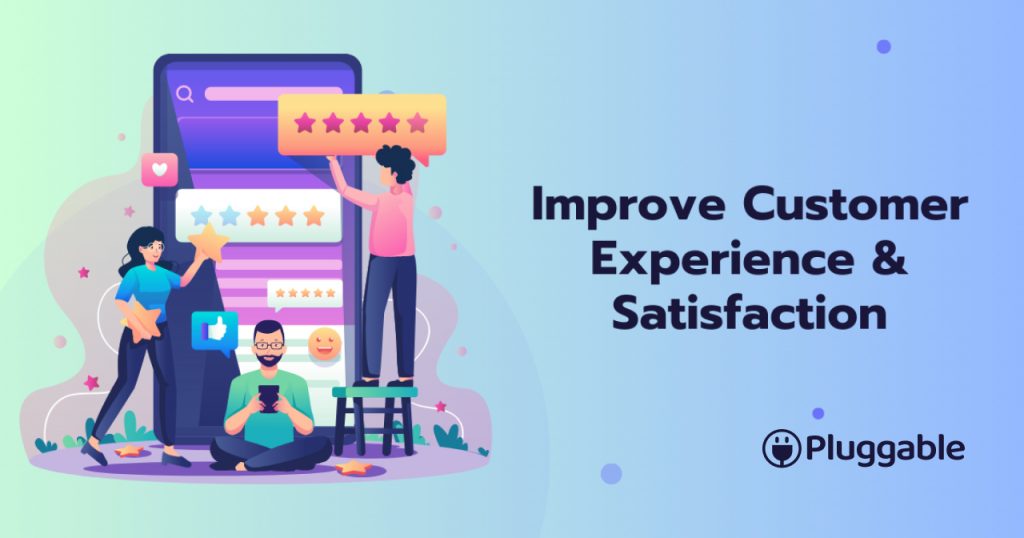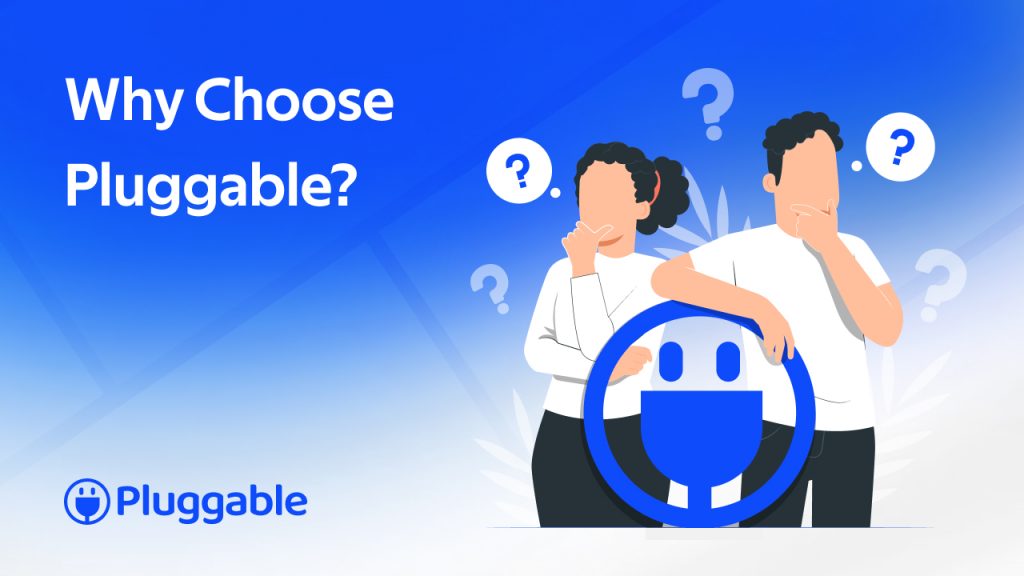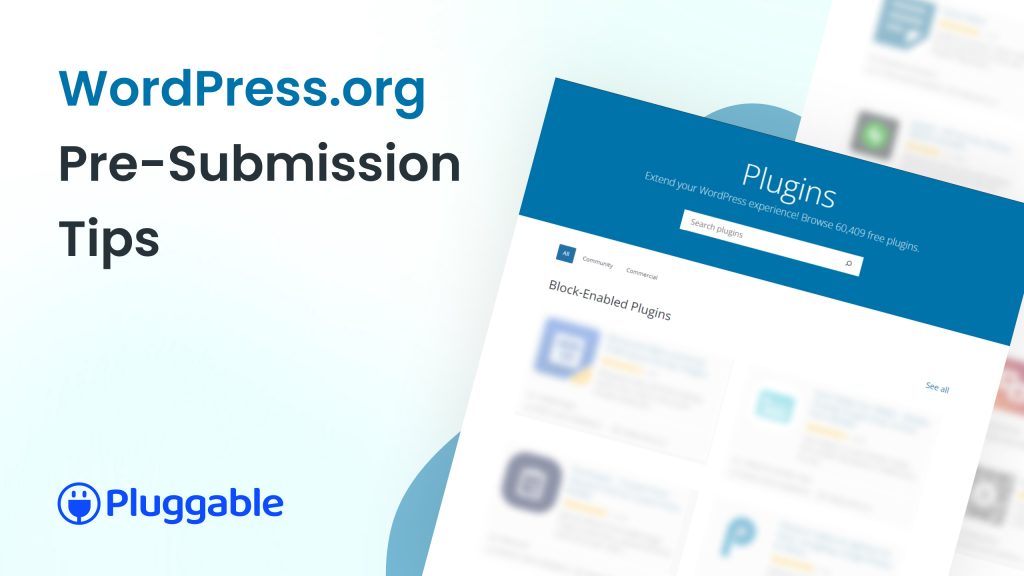Attention, revolutionaries of exceptional customer experience! Prepare to challenge the status quo and embark on a journey that will transform your business from mere adequacy to extraordinary greatness. In a world teeming with competitors vying for attention, it’s time to rise above the noise and claim your rightful place at the forefront of customer satisfaction.
Imagine a scenario where every interaction with your brand is a symphony of delight, orchestrated to captivate, surprise, and elevate. It’s no longer about meeting expectations but surpassing them with gusto. This is the dawn of the customer experience revolution—a seismic shift where businesses shatter the shackles of mediocrity and unleash a wave of unforgettable moments that leave customers breathless with admiration.
In this article, we’re going to overthrow conventional thinking and unveil the secrets to revolutionizing your approach to customer experience. Prepare to challenge the norms, dismantle outdated practices, and ignite a fire within your organization that fuels the unrelenting passion for your customers’ satisfaction.
Join us as we explore cutting-edge strategies that will have your customers raving about their interactions with your brand. From harnessing the power of personalization to embracing feedback as a catalyst for improvement, we’ll equip you with the tools to craft an experience that transcends the ordinary and catapults your business into the realm of greatness.
So, fellow revolutionaries, gather your wits, don your armor of innovation, and let’s storm the castle of customer expectations. The time has come to revolutionize the way we think, act, and enchant our customers. Are you ready? Then let the revolution begin!
What is the Difference between Customer Experience and Satisfaction?

Customer experience
At the heart of every successful business lies the art of crafting remarkable customer experiences. Customer experience (CX) encompasses every touchpoint, from the initial interaction to the post-purchase support, and encompasses the emotional connection a customer feels throughout their journey with your brand.
Unlike the traditional transactional approach, which focuses solely on the product or service being offered, CX embraces a holistic perspective. It considers the entire ecosystem of interactions, aiming to create a seamless, immersive, and memorable experience that resonates with customers on a profound level.
A remarkable customer experience goes beyond meeting expectations; it forges an emotional bond that transcends the ordinary and leaves an indelible mark. It transforms mundane transactions into extraordinary memories, fostering loyalty, advocacy, and long-term relationships.
Customer satisfaction
While customer experience encompasses the entirety of a customer’s journey, customer satisfaction plays a crucial role in determining the success and longevity of your business. Customer satisfaction is the measure of how well your product or service meets or exceeds the expectations of your customers.
Satisfied customers are more likely to become loyal patrons, repeat purchasers, and brand advocates. They contribute to positive word-of-mouth marketing, attracting new customers and enhancing your brand reputation.
To ensure customer satisfaction, it is essential to understand and align with the needs and desires of your target audience. This requires a deep understanding of their pain points, preferences, and aspirations. By consistently delivering on these key elements, you can build a solid foundation of customer satisfaction and foster lasting relationships.
Assessing the Current State of Customer Experience and Satisfaction
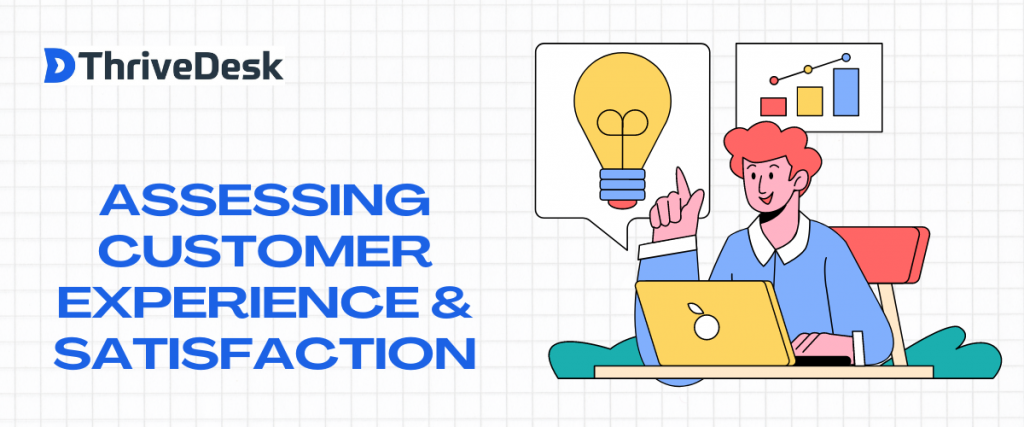
Before embarking on the journey of improving customer experience and satisfaction, it is crucial to assess the current state of affairs within your business. This assessment will provide valuable insights into areas of strength and areas that require improvement. Here are some key steps to help you evaluate the current state of customer experience and satisfaction:
- Customer Feedback: Start by gathering feedback directly from your customers. Implement surveys, interviews, or focus groups to gain a deeper understanding of their perceptions and experiences. Ask questions about their satisfaction levels, pain points, and suggestions for improvement. This feedback will serve as a foundation for identifying areas that require immediate attention.
- Data Analysis: Leverage data analytics to unearth patterns, trends, and areas of opportunity. Explore customer interactions, purchase history, support tickets, and online reviews to identify recurring issues or bottlenecks. Analyzing data will help you pinpoint specific touchpoints that are impacting customer experience and satisfaction.
- Customer Journey Mapping: Map out the entire customer journey from the initial point of contact to post-purchase interactions. Visualize each step, touchpoint, and potential pain points along the way. By analyzing the journey, you can identify areas where the experience falls short and devise strategies to bridge those gaps.
- Competitive Analysis: Assess the customer experiences offered by your competitors. Analyze their strengths, weaknesses, and unique selling propositions. This analysis will provide valuable insights into industry benchmarks and help you identify areas where you can differentiate and excel.
- Key Performance Indicators (KPIs): Establish and track key performance indicators to measure and monitor customer experience and satisfaction. KPIs may include metrics such as customer satisfaction scores (CSAT), Net Promoter Score (NPS), customer retention rates, response times for customer support, and customer lifetime value (CLV). These metrics will enable you to gauge progress and identify areas that require further attention.
- Internal Assessment: Evaluate your organization’s internal processes, policies, and culture. Assess how customer-centric your employees are and whether they have the necessary tools and training to deliver exceptional experiences. Identify any internal obstacles or bottlenecks that may hinder your ability to provide outstanding customer experiences.
By conducting a comprehensive assessment, you will gain a clear picture of your current standing in terms of customer experience and satisfaction. This assessment will serve as the foundation for developing targeted strategies and initiatives to elevate your customer-centric approach. In the next section, we will explore actionable steps to improve customer experience and satisfaction. So, let’s dive in and embark on the path to greatness!
Strategies for Improving Customer Experience and Satisfaction
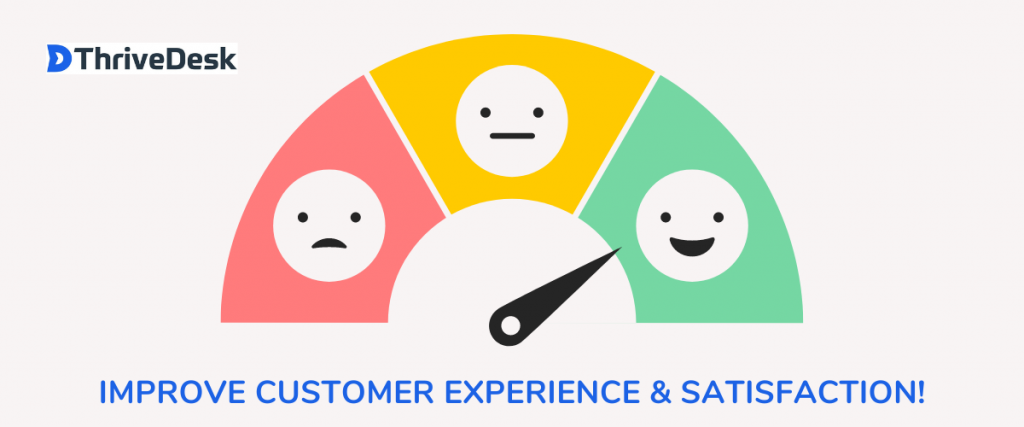
Enhancing Communication and Engagement
Effective communication and meaningful engagement are key drivers of customer experience and satisfaction. By implementing strategies to enhance communication and engagement, you can establish strong connections with your customers. Here are some approaches to consider:
- Proactive Communication: Be proactive in reaching out to your customers. Provide regular updates, relevant information, and personalized promotions. Utilize various channels such as email, social media, and chatbots to deliver timely and tailored messages. By staying in touch with your customers, you demonstrate that you value their business and strive to keep them informed.
- Active Listening: Actively listen to your customers and encourage open dialogue. Create opportunities for feedback and ensure that their voices are heard and respected. Respond promptly and sincerely to their inquiries, concerns, and suggestions. By actively listening, you build trust and show your customers that their opinions matter.
- Omni-channel Experience: Embrace an omni-channel approach to engage with customers seamlessly across multiple touchpoints. Ensure consistency in messaging, branding, and experience regardless of the channels they choose. Whether it’s through your website, mobile app, social media platforms, or physical stores, provide a unified and cohesive experience that reflects your brand values.
- Personalized Interactions: Tailor interactions with your customers based on their preferences and past interactions. Leverage customer data to personalize communications and recommendations. Use their names in emails, offer product suggestions based on their purchase history, and provide relevant content that resonates with their interests. Personalization demonstrates that you understand and value each customer as an individual.
By enhancing communication and engagement, you can create lasting connections with your customers. These efforts not only improve customer experience and satisfaction but also foster loyalty and advocacy. Remember, effective communication is a two-way street, and engaged customers are more likely to become loyal brand advocates.
Providing Exceptional Customer Support
Exceptional customer support is a vital component of delivering outstanding customer experience and satisfaction. By prioritizing and enhancing your customer support efforts, you can build strong relationships and ensure customer loyalty. Here are some strategies to consider:
- Quick Response Times: Responding promptly to customer inquiries and issues is crucial. Implement efficient systems and processes to track and manage support requests effectively. Aim to provide timely resolutions and keep your customers informed throughout the support journey. By addressing their needs promptly, you demonstrate that their time and concerns are valued.
- Empowered Support Team: Equip your support team with the necessary training, resources, and authority to address customer issues effectively. Encourage a customer-first mindset and empower your team to go above and beyond to assist customers. Foster a culture of empathy and problem-solving, ensuring that your support team is well-equipped to handle various customer situations with care and competence.
- Self-Service Options: Offer self-service options that empower customers to find answers to common questions or issues independently. Develop a comprehensive knowledge base, FAQs, or video tutorials that provide step-by-step guidance. By providing self-service resources, you enable customers to get the assistance they need quickly and conveniently, freeing up your support team to focus on more complex inquiries.
- Proactive Communication: Anticipate customer needs and reach out proactively. Use data and insights to identify potential issues or opportunities for assistance. For example, send personalized follow-up emails after a purchase, check in on customer satisfaction, or offer additional resources or support based on their previous interactions. By being proactive, you show customers that you are attentive and committed to their success.
- Feedback and Continuous Improvement: Regularly seek feedback from your customers about their support experiences. Implement surveys or feedback mechanisms to gather insights and identify areas for improvement. Actively listen to customer feedback, address concerns, and continuously refine your support processes. By valuing customer input and making iterative improvements, you demonstrate your commitment to delivering exceptional support.
By providing exceptional customer support, you not only address customer issues effectively but also foster trust and loyalty. Going the extra mile to assist customers and empower them to succeed strengthens the overall customer experience and leads to higher satisfaction levels. Remember, exceptional customer support is a powerful differentiator in a competitive market and can turn satisfied customers into brand advocates.
ThriveDesk Leading by Example
Introducing ThriveDesk, a comprehensive help desk solution designed to revolutionize support operations for businesses. With its user-friendly interface and cost-effective pricing, ThriveDesk is the ideal choice for small businesses seeking efficient and streamlined support management.
ThriveDesk leverages the power of the cloud, enabling seamless access from anywhere with an internet connection. This cloud-based approach caters to the needs of businesses with remote employees and provides round-the-clock support to customers beyond traditional business hours.
Key Features
- Centralized Customer Support: Experience a shared inbox that consolidates customer queries for efficient management and enhanced collaboration among support agents.
- Real-time Live Chat: Engage with customers in real-time through a live chat feature, ensuring prompt responses and personalized assistance.
- Knowledge Base: Empower your customers with self-service resources, including informative articles and frequently asked questions (FAQs), reducing support ticket volume and empowering customers to find answers on their own.
- Reporting: Gain valuable insights into your support operations with comprehensive reporting features. Track ticket volumes, response times, and customer satisfaction data to identify areas for improvement and monitor performance.
- Integrations: Seamlessly connect ThriveDesk with other software and tools, such as CRM systems or project management platforms, to enhance productivity and streamline workflows.
- Customization: Tailor ThriveDesk to suit your unique business requirements and brand identity. Customize the software’s appearance, settings, and workflows to align with your support processes seamlessly.
- WPPortal: Benefit from a fully customizable communications portal that enables you to provide a branded and consistent support experience to your customers.
- Assistive AI: Leverage the power of AI-driven editing options to enhance your support team’s efficiency and productivity. ThriveDesk’s AI capabilities assist in automating repetitive tasks, improving response quality, and accelerating ticket resolution.
ThriveDesk with its plethora of features is a good case study into how you can use customer support software to ensure that your customer receives the most optimized experience possible no matter what business you are in.
Leveraging Customer Data for Personalization
In today’s data-driven world, utilizing customer data for personalization is a game-changer for enhancing customer experience and satisfaction. By harnessing the power of data, you can create tailored experiences that resonate with individual customers. Here are some strategies to leverage customer data effectively:
- Collect and Analyze Data: Gather relevant customer data at various touchpoints, such as interactions on your website, social media engagement, or purchase history. Utilize customer relationship management (CRM) systems and data analytics tools to consolidate and analyze this information. By understanding your customers’ preferences, behaviors, and demographics, you gain valuable insights that can drive personalization efforts.
- Segment and Target: Divide your customer base into meaningful segments based on common characteristics, interests, or purchase patterns. By segmenting your customers, you can create targeted marketing campaigns, personalized recommendations, and customized offers. Tailoring your messaging and offerings to specific segments increases relevance and improves the chances of resonating with individual customers.
- Personalized Interactions: Utilize customer data to personalize interactions with your customers. Address them by name in communications, recommend products or services based on their previous purchases, and provide relevant content that aligns with their interests. By personalizing interactions, you demonstrate that you understand and value each customer as an individual, fostering a deeper sense of connection and satisfaction.
- Automation and AI: Leverage automation and artificial intelligence (AI) technologies to scale personalization efforts. Utilize automated email marketing campaigns that trigger based on specific customer actions or behaviors. Implement AI-powered recommendation engines that analyze customer data to suggest relevant products or content. Automation and AI enable you to deliver personalized experiences efficiently and consistently, even as your customer base grows.
- Privacy and Consent: Respecting customer privacy is crucial when leveraging customer data. Ensure compliance with relevant data protection regulations and obtain appropriate consent for data collection and usage. Be transparent about how customer data is utilized and allow customers to control their preferences. By prioritizing data privacy and transparency, you build trust with your customers, enhancing their confidence in your personalized approach.
By leveraging customer data for personalization, you create experiences that cater to individual needs and preferences. Tailored recommendations, targeted offers, and personalized interactions leave a lasting impression, leading to increased customer satisfaction and loyalty. Remember, data-driven personalization is a powerful tool in the quest for exceptional customer experiences.
Cultivating a Customer-Centric Culture
Building a customer-centric culture is crucial for consistently delivering exceptional customer experiences and driving satisfaction. When every member of your organization prioritizes customer needs and satisfaction, it creates a positive ripple effect throughout the entire customer journey. Here are some strategies to cultivate a customer-centric mindset within your company:
- Leadership Example: Cultivate a customer-centric culture starting from the top. Leaders within your organization should embody the values of exceptional customer experiences and consistently prioritize customer satisfaction in their decision-making. When leaders actively demonstrate their commitment to putting customers first, it sets the tone for the entire organization.
- Employee Empowerment: Empower your employees to go above and beyond in delighting customers. Encourage them to take ownership of customer issues, solve problems proactively, and provide personalized assistance. Foster a work environment that values employee autonomy and encourages them to take initiative in creating positive customer experiences.
- Customer Feedback Loop: Establish a feedback loop that encourages continuous customer feedback. Actively listen to customer insights, suggestions, and concerns. Implement mechanisms such as surveys, customer reviews, or feedback forms to gather feedback at different touchpoints. Use this feedback to identify areas for improvement and make necessary changes to enhance the customer experience.
- Cross-Department Collaboration: Break down silos within your organization and foster collaboration across different departments. Encourage teams to share customer insights, challenges, and successes. By fostering collaboration, you create a holistic view of the customer journey and enable teams to work together to deliver seamless experiences at every touchpoint.
- Training and Development: Invest in training and development programs that focus on customer-centric skills and behaviors. Equip your employees with the necessary tools, knowledge, and resources to understand customer needs, empathize with their concerns, and provide exceptional service. Continuous learning and development help employees stay aligned with customer-centric goals.
- Recognition and Rewards: Recognize and reward employees who consistently deliver exceptional customer experiences. Celebrate customer success stories, share positive customer feedback, and publicly acknowledge employees who go the extra mile for customers. Recognizing and rewarding customer-centric behaviors reinforces the importance of prioritizing customer satisfaction across the organization.
By cultivating a customer-centric culture, you create an environment where every employee understands the significance of customer satisfaction. When employees are empowered, aligned, and equipped with the right mindset and tools, they can consistently deliver exceptional experiences that drive customer loyalty and advocacy. Remember, a customer-centric culture is not built overnight but through ongoing commitment and reinforcement at all levels of the organization.
How Customer Support Software Can Help to Improve Customer Experience and Satisfaction?

Customer support software plays a pivotal role in enhancing customer experience and satisfaction. By leveraging the capabilities of modern customer support software, businesses can streamline their support operations, improve efficiency, and provide a seamless experience for their customers. Here are some ways customer support software can contribute to improving customer experience and satisfaction:
- Efficient Ticket Management: Customer support software enables businesses to effectively manage customer support tickets. It provides a centralized system to track, prioritize, and assign tickets to the appropriate support agents. With automated ticket routing and escalation features, businesses can ensure that customer inquiries are addressed promptly and efficiently.
- Omnichannel Support: Today’s customers expect support across multiple channels, such as email, phone, live chat, social media, and self-service portals. Customer support software offers omnichannel capabilities, allowing businesses to provide consistent support experiences regardless of the channel chosen by customers. This ensures that customers can reach out for help through their preferred communication method, leading to greater convenience and satisfaction.
- Knowledge Base and Self-Service Options: Customer support software often includes knowledge base functionality, where businesses can create a repository of frequently asked questions (FAQs), troubleshooting guides, and helpful articles. By offering self-service options, businesses empower customers to find answers to their queries independently, reducing support ticket volume and providing quick resolutions. This not only enhances customer satisfaction but also frees up support agents to focus on more complex issues.
- Automation and AI-powered Features: Many customer support software solutions incorporate automation and artificial intelligence (AI) capabilities. Automation can streamline repetitive tasks, such as ticket categorization and response routing, enabling faster response times and improved efficiency. AI-powered features, such as chatbots, can handle basic customer inquiries, provide instant responses, and escalate complex issues to human agents when needed. This automation and AI-driven support contribute to quicker resolutions and round-the-clock availability, enhancing customer satisfaction.
- Customer Data and Analytics: Customer support software collects and analyzes valuable data related to customer interactions, support ticket histories, response times, and customer satisfaction ratings. Businesses can leverage this data to gain insights into support performance, identify areas for improvement, and make data-driven decisions. By analyzing customer data and trends, businesses can proactively address common issues, enhance support processes, and personalize support interactions, resulting in higher customer satisfaction levels.
- Collaboration and Knowledge Sharing: Customer support software often includes collaboration features, enabling support agents to collaborate, share knowledge, and provide seamless handoffs when necessary. This ensures that customers receive consistent support even when their inquiries require input from multiple agents or teams. Collaboration features facilitate efficient problem-solving, reduce response times, and create a positive impression of your support team’s expertise and professionalism.
Wrapping Up!
In the pursuit of business success, prioritizing exceptional customer experience is paramount. By implementing strategies like enhanced communication, exceptional customer support, personalization through customer data, and fostering a customer-centric culture, businesses can forge lasting customer relationships.
Customer support software plays a crucial role in streamlining operations and delivering seamless experiences.
Remember, improving customer experience is an ongoing journey that requires adaptation, feedback, and a culture that values customers. By prioritizing the customer and leveraging technology, businesses can create remarkable experiences that inspire advocacy and propel success.
Let’s embark on the path from good to great, providing exceptional customer experiences that make a lasting impact.

